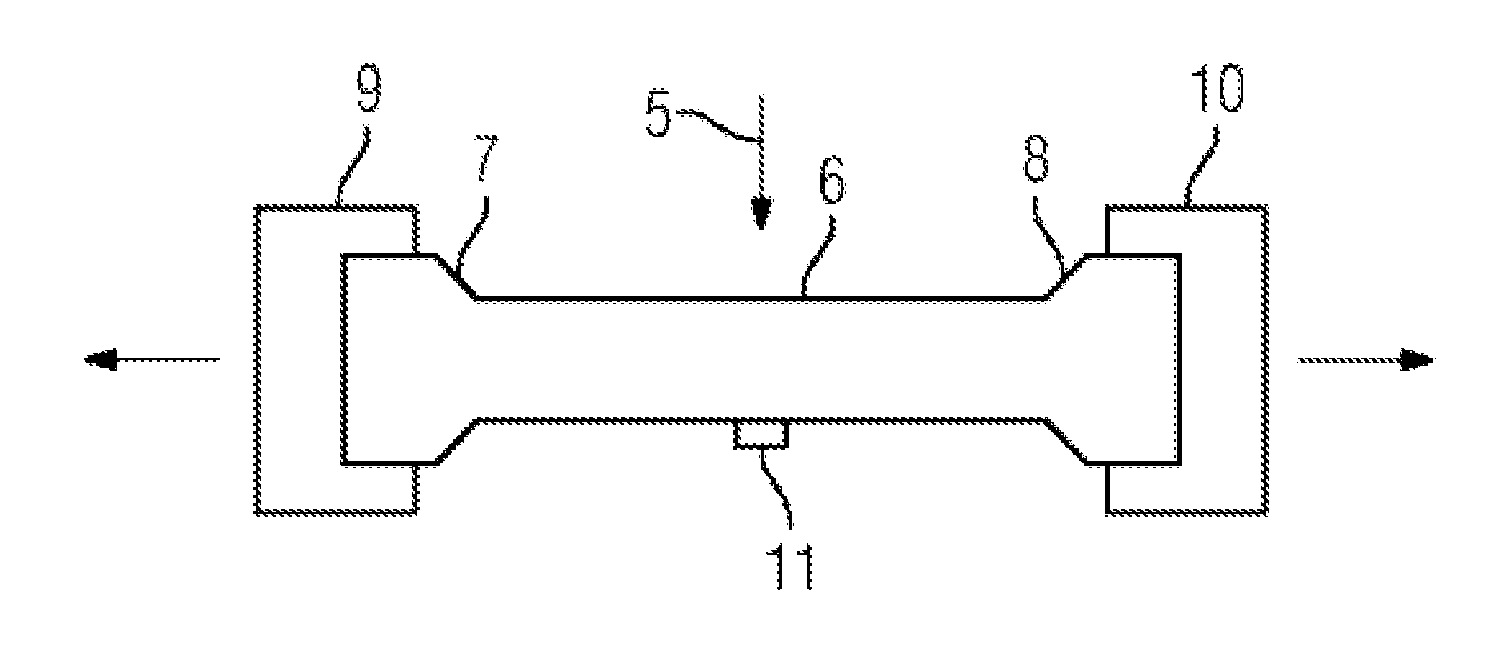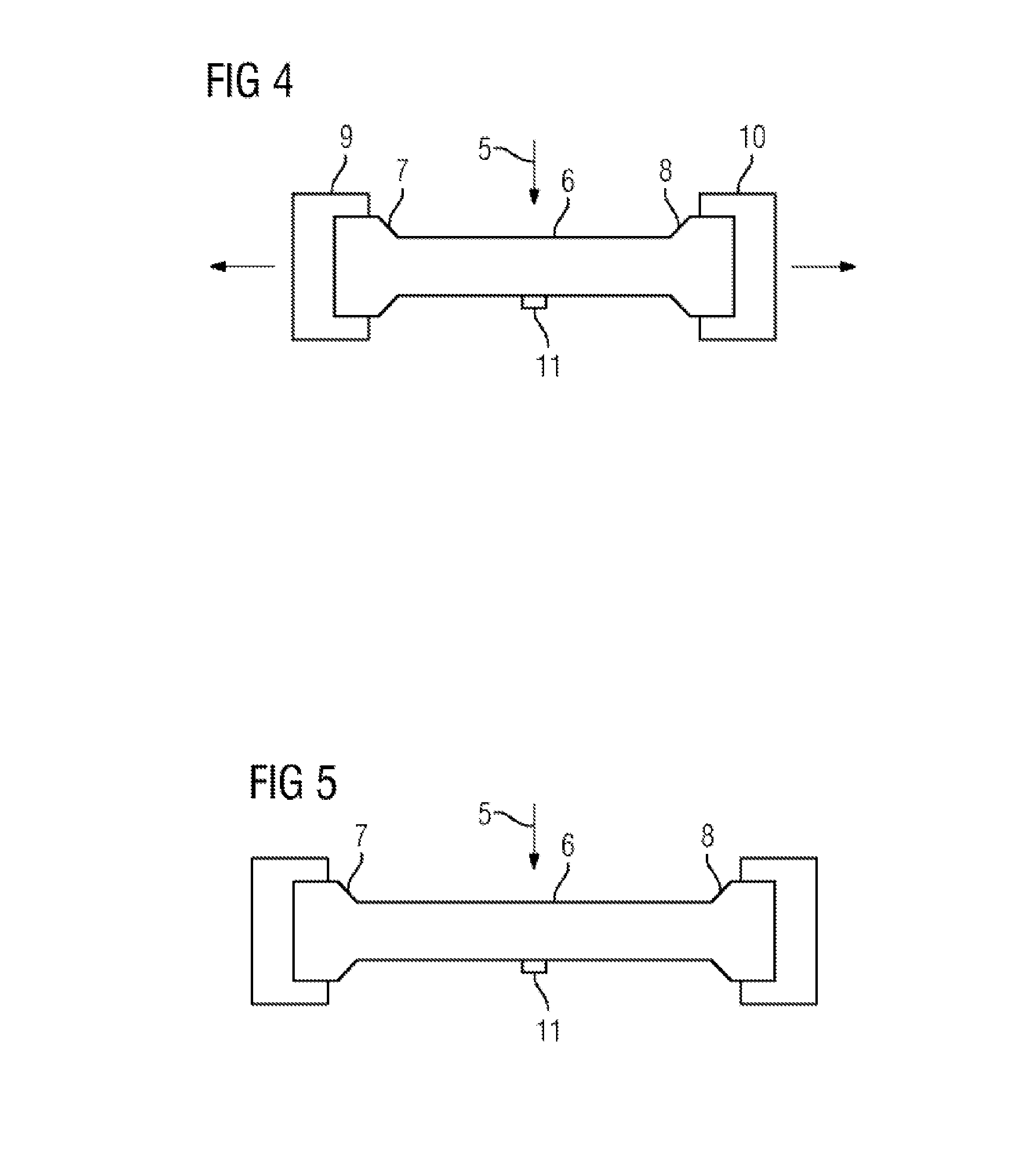Method for producing a compressor blade
- Summary
- Abstract
- Description
- Claims
- Application Information
AI Technical Summary
Benefits of technology
Problems solved by technology
Method used
Image
Examples
Embodiment Construction
[0022]FIG. 1 is a first stress-strain graph, the strain being plotted on the abscissa and the stress on the ordinate.
[0023]An austenitic-ferritic steel is used for the method for producing a compressor blade. This stainless steel is also referred to as duplex steel. Firstly, a blank is forged from this steel. The blank is square bar stock, which is later divided up. In this way, a plurality of compressor blades can be produced from one blank. It is evident from FIG. 1 that the steel initially has a linear-elastic behavior under tensile loading, this region being denoted by the reference sign 1. This is adjoined by a plastic region, i.e. when a specific elongation has been exceeded, plastic deformation remains after load relief The 0.2% elongation limit 3 can be used, for example, as the limit value between the linear-elastic region 1 and the plastic region 2; at this point of the stress-strain graph, the material has an elongation of 0.2% with respect to its initial state. It can be...
PUM
| Property | Measurement | Unit |
|---|---|---|
| Elongation | aaaaa | aaaaa |
| Force | aaaaa | aaaaa |
| Elongation | aaaaa | aaaaa |
Abstract
Description
Claims
Application Information
 Login to View More
Login to View More - R&D
- Intellectual Property
- Life Sciences
- Materials
- Tech Scout
- Unparalleled Data Quality
- Higher Quality Content
- 60% Fewer Hallucinations
Browse by: Latest US Patents, China's latest patents, Technical Efficacy Thesaurus, Application Domain, Technology Topic, Popular Technical Reports.
© 2025 PatSnap. All rights reserved.Legal|Privacy policy|Modern Slavery Act Transparency Statement|Sitemap|About US| Contact US: help@patsnap.com



